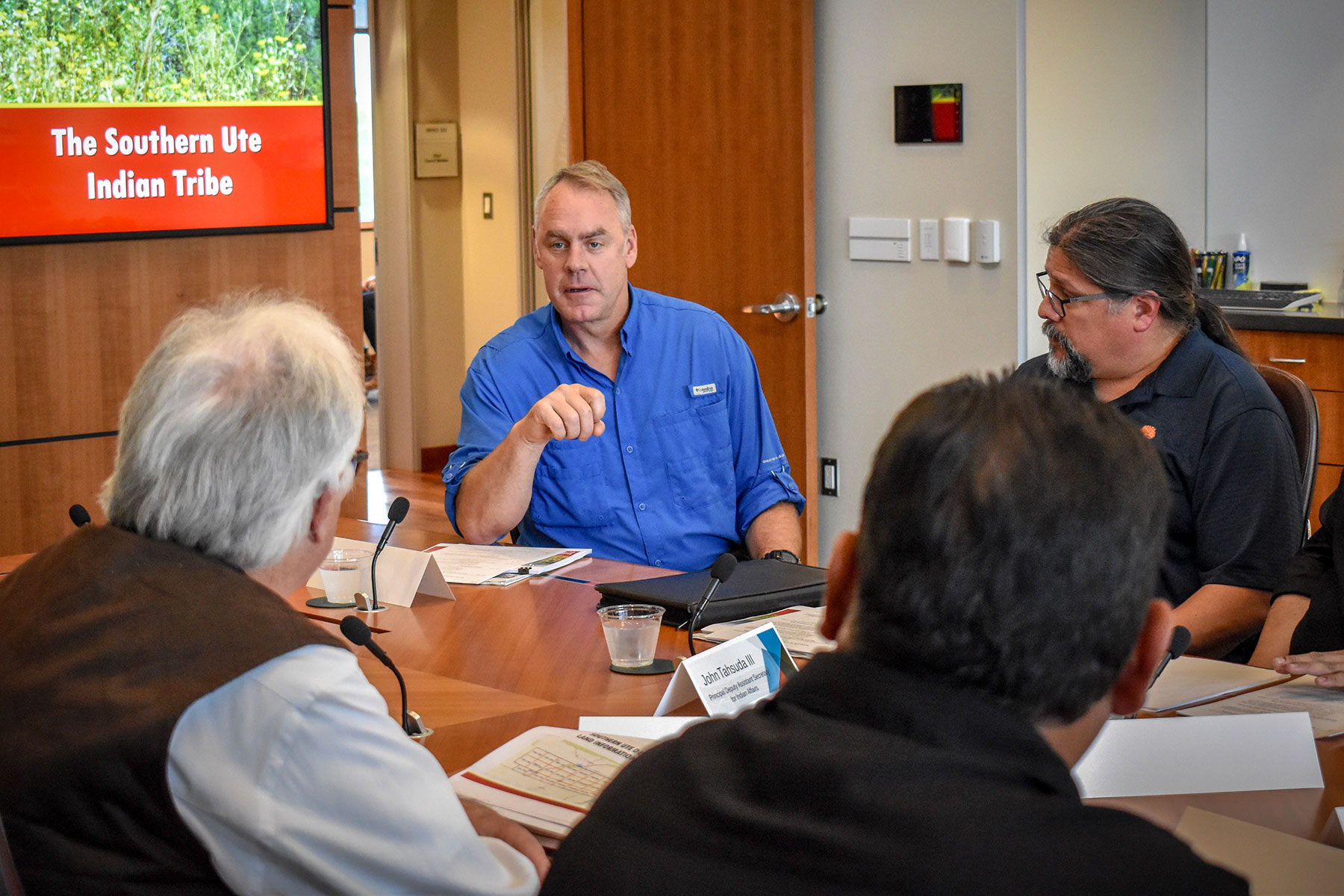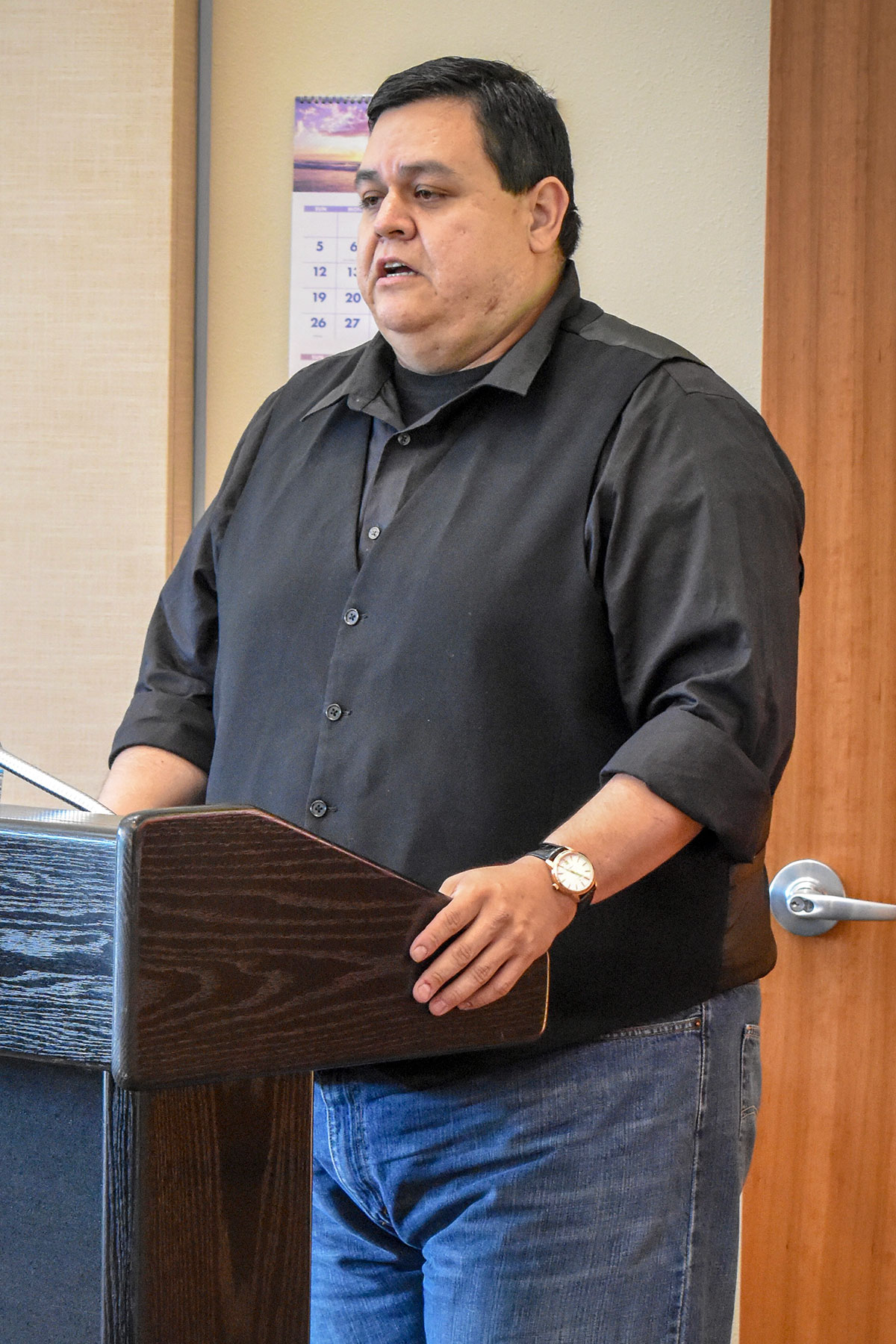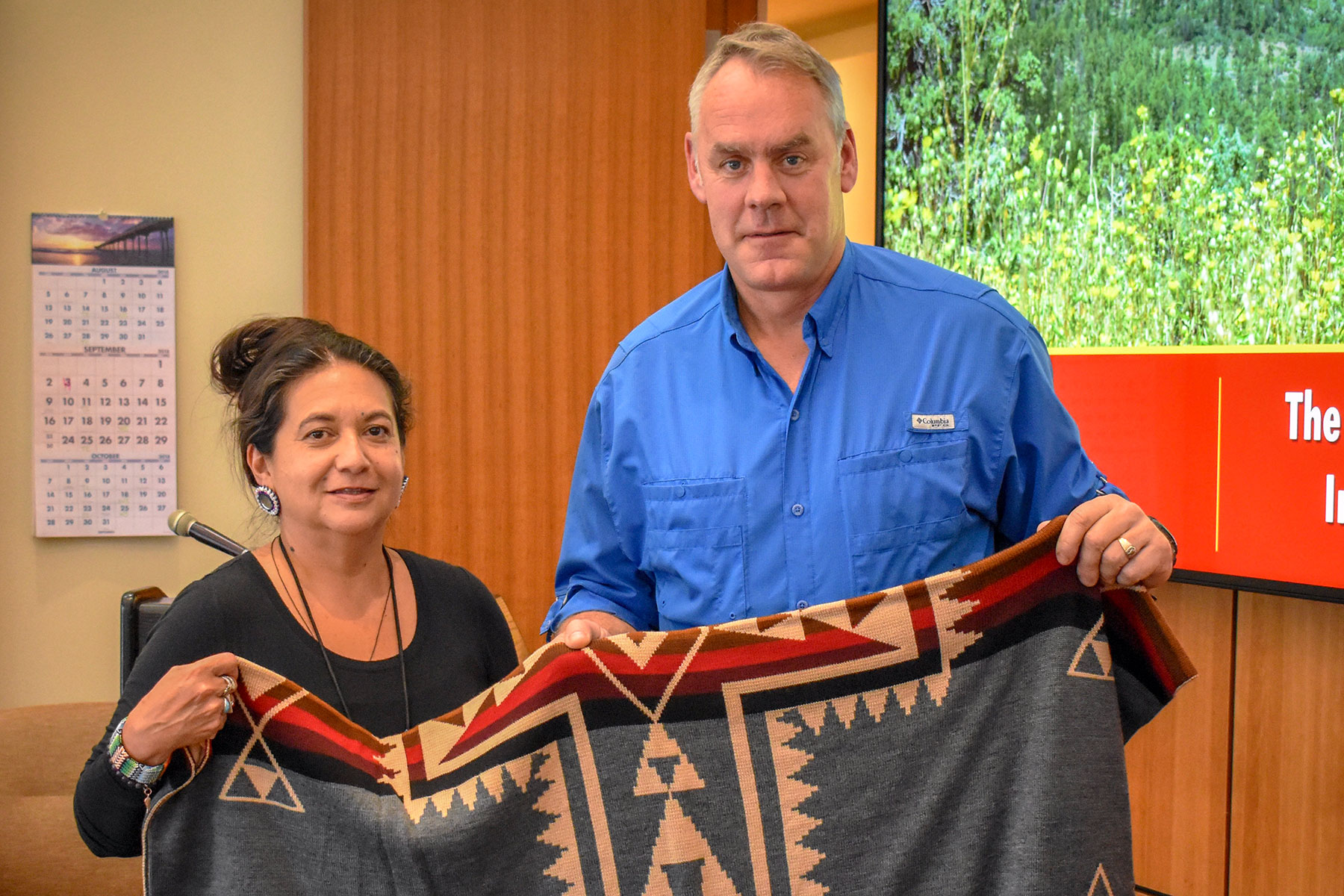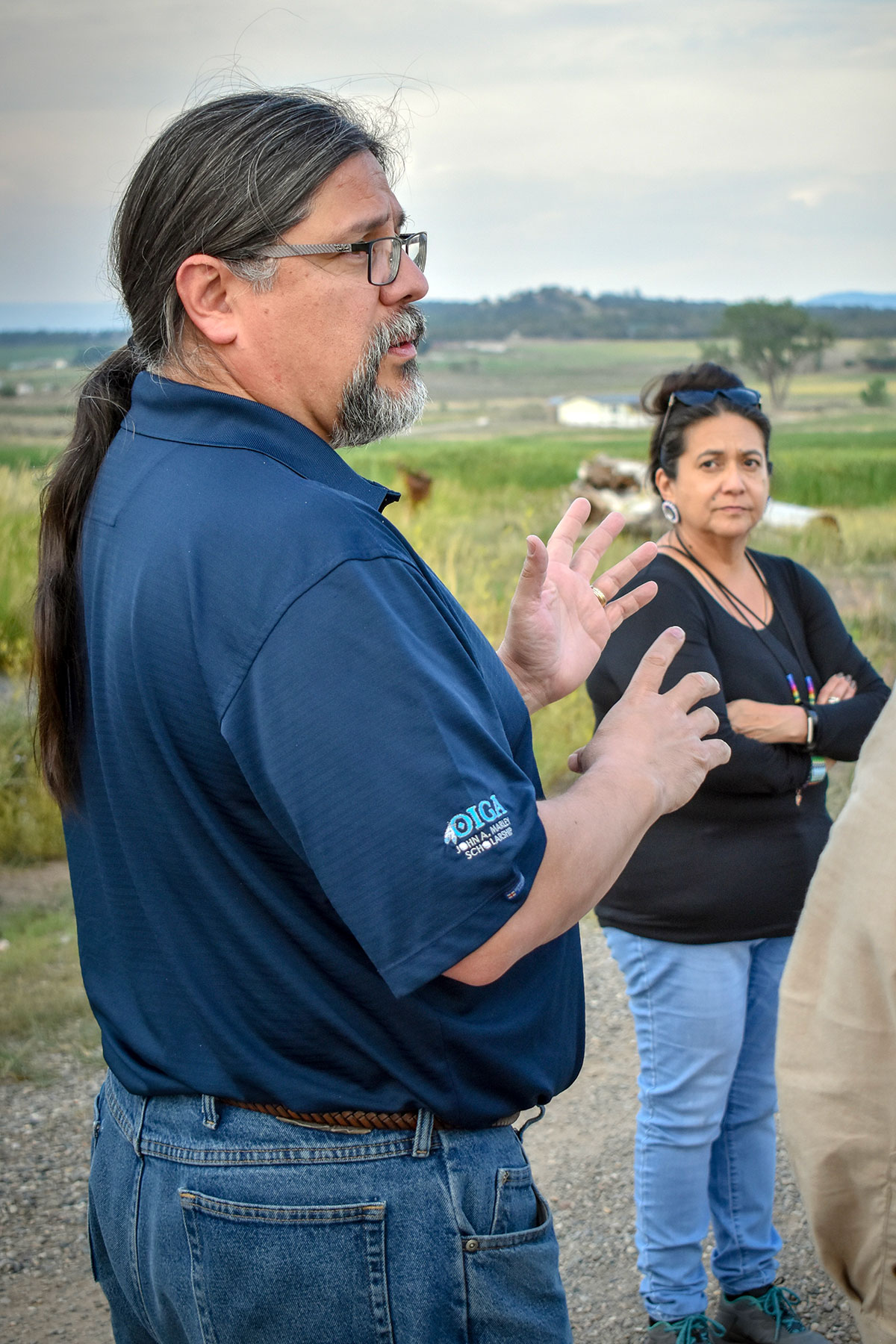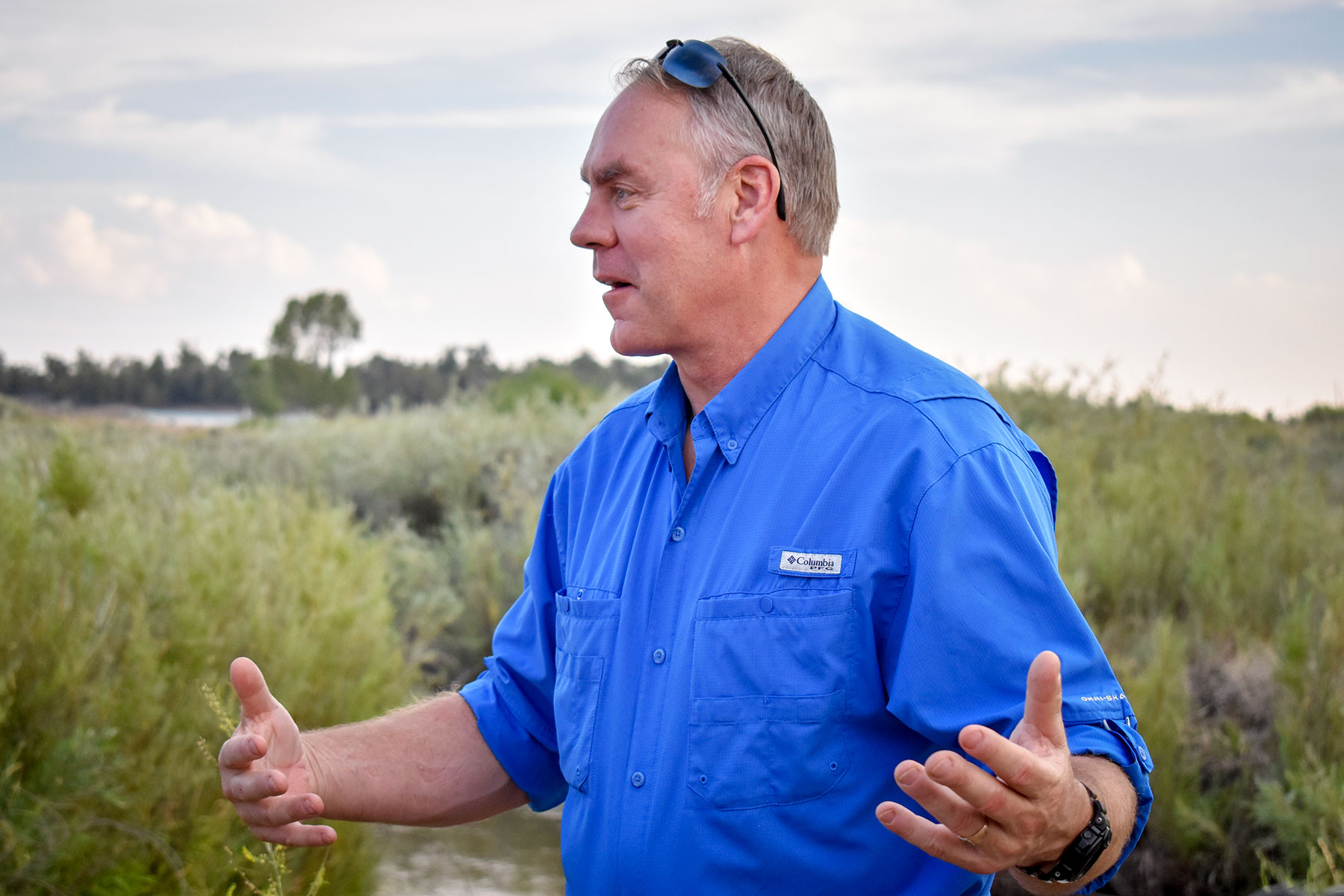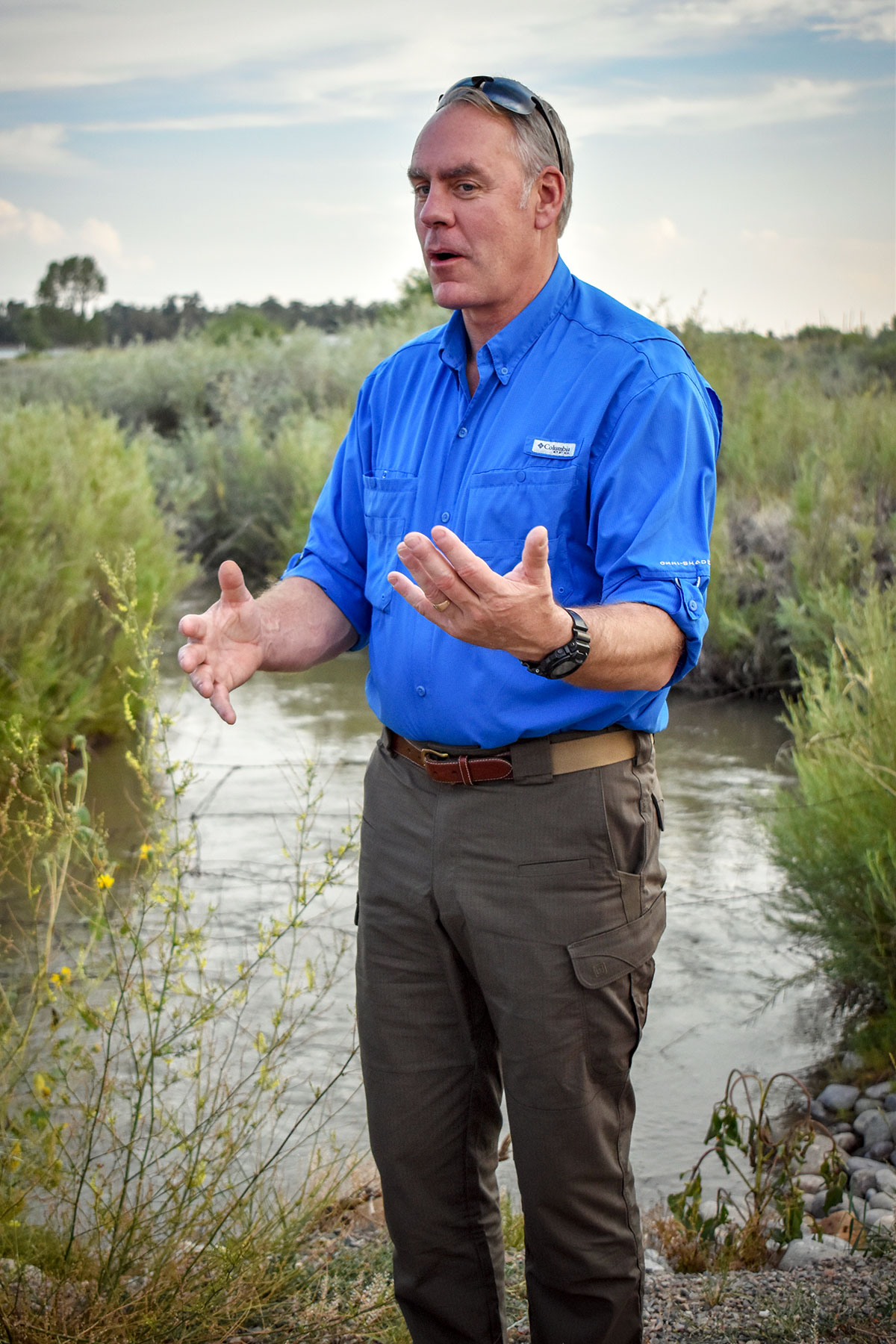The Southern Ute Tribal Council graciously hosted Secretary of the Interior, Ryan Zinke, on Saturday, Aug. 4. Secretary Zinke accepted the Tribe’s invitation to discuss streamlining processes under the supervision of the Bureau of Indian Affairs (and other DOI bureaus and departments), increasing tribal self-determination and exercising tribal sovereignty.
The meeting began with Secretary Zinke detailing his top priorities which include restructuring, conservation, and permitting. Zinke elaborated on the Department of Interior’s necessity to restructure the department’s archaic bureaus, missions, and style of leadership. This plan also advocates for reorganizing regions reducing them from 61 separate regions to 12 newly defined regions.
Secretary Zinke acknowledged that often times many different land holders and managers should be included in the consultation stage of projects throughout the nation. He also shared that permitting for certain projects should not require “shopping around between multiple bureaus.”
Southern Ute Tribal Council members were pleased to hear Zinke share his strong beliefs of tribal sovereignty. “In the history of the Department of the Interior, very rarely if any, have nations ever been asked to participate in something outside of their nations,” declared Zinke. Tribal Council took the opportunity to share the Tribe’s success due to prudent and sustainable management of its natural resources despite structural inefficiencies, leading to healthcare, education, employment and overall better way of life for the tribal membership.
Council Member Adam Red presented a detailed history of the Tribe, enterprises, energy infrastructure, water delivery systems, and the tumultuous history with the Southern Ute Agency. Tribal Council also protested the need for additional funding to agencies and support to hire for vacant positions that often go unfilled due to isolated agency locations or the roadblocks in the DOI hiring process.
The visit concluded with a field tour to visit the Pine River Indian Irrigation Project’s dilapidated infrastructure. Tribal Council and staff gave explanations of repairs, advocating the necessity to turn-key WIIN Act funding, and provide visual examples of decade old head gates structures.
Overall the visit was a success, providing the Tribe and Secretary Zinke the opportunity to share plans for the Southern Ute Indian Tribe to increase self-determination and sovereignty.

